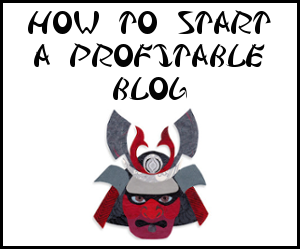Not long ago, a good friend of mine received a wedding gift from his in-laws: a 1 oz. 1980 South African Krugerrand. His in-laws informed him proudly that they had purchased 10 of them in 1980 for $400 each. Since my friend knows almost nothing about gold, he asked whether they’d appreciated significantly in value. He was astonished to discover that the coin he was holding in his hand was currently worth approximately $1,800.
Most of my friend’s disbelief stemmed from the fact that he couldn’t believe that in today’s economic climate, something’s value had actually gone up, in contrast to the value of paper currency and most of the stocks he’d purchased. Therein lies the inherent strength of gold: it flourishes the most in times of economic uncertainty. It’s a proven safeguard against inflation, and a marvelous tool for minimizing portfolio volatility.
Gold coins can essentially be broken down into two major categories: bullion and numismatic. As both categories have their own particular benefits, it’s important to have an understanding of each.
Gold Bullion Coins
When most of us hear the word “bullion,” we think of large bricks of gold, like the kind we see villains in movies trying to steal from vaults. It’s a common misconception that gold coins aren’t the same as bullion. Bullion simply refers to a recognized weight and fineness of gold which can be purchased for the current price of gold, with the addition of a premium (typically no more than 10 percent).
Gold bullion coins have been minted all around the world. The aforementioned South African Krugerrand is one of the most popular in the world, while the US Gold Eagle is the most popular bullion coin in America. They have artistic merit as well, like the beautiful Austrian Philharmonic, which is considered by many to be one of the most aesthetically pleasing gold coins available. They come in a range of sizes (1 oz, 1/2 oz, 1/4 oz, and 1/10 oz), making bullion a possibility for those with even the most conservative budgets.
Numismatic Coins
Coin-collecting is one of those pastimes that, for whatever reason, tends to be portrayed as somewhat eccentric. Perhaps this is because the level of passion associated with it often runs high, with coin collections being passed down from generation to generation, and certain coins being hunted for over several lifetimes. This may not appeal to your sense of adventure, but the truth is that numismatic coins, or rare gold coins as they are often called, are considered by many to be the best form of gold ownership.
For starters, many are drawn to the privacy that owning a pre-1933 investment coin entitles the buyer. Rare gold coins are a non-reportable asset, meaning the only two people who need know about the transaction are the dealer and the seller. Other advantages are that numismatic coins can’t be confiscated by the government in times of national emergencies, unlike bullion, which was confiscated by President Roosevelt in 1933. Though there are usually higher premiums involved in their acquisition, numismatic coins have been known to perform at an even higher level than bullion over the long term.
Final Thought
Whether you’re a savvy investor looking to minimize your portfolio’s volatility, a collector looking for the missing link in your collection or someone with little financial expertise looking to make an initial purchase, gold will always be there as an alternative choice for hedging or potential capital appreciation.
This was a guest post from John at LearCapital.com. Thanks John for educating us about bullion vs. numismatic!
Anybody ever consider buying gold coins as an investment or a way to preserve wealth? Is gold in a bubble now, or do you think after the 15% decline from the peak, now is a good buying opportunity?





Very interesting post, John. Gold is an appealing investment on many levels, and you’ve inspired me to learn more.
As long as lots of Chinese and Indians think gold and silver are just swell as a way to preserve value and wealth, I’ll keep buying too.
“I don’t know nothing about no G** D**ned Krugerrands.” –circa 1985, Coleman Young, former, mayor of Detroit, embroiled in one of his many scandals at the time. Can’t hear the word Kruggerands without thinking of that quote. He was always a classy one.
Right now, I’m concerned that gold is set for a fall (as I’m sure plenty of others are). I do have some silver coins that I should probably get on track with selling while the price is high. We’ll see though; obviously, no one knows what the future holds.
What about some advice on storing/safekeeping real gold (bullion or numismatic)? Where does gold jewelry fit in this discussion, if at all?
I didn’t know about what buillion really meant before reading this post and actually had never even heard the term numismatic before so thanks for teaching me something new! :)
I own some hard assets in the form of sterling silver. In fact I have an antique candelabra (inherited from Mom) I plan to acution off.
Thanks John. I agree with your post especially since now with the value of the dollar decreasing gold has become a great commodity to invest on due to their value being inversely correlated. I found out that silver is also another great commodity to invest in.
I’ve put about 10% of my assets into precious metals, as I think it’s a good alternative to putting it into cash. To me, gold is another currency, but one that is not subject to the same political pressures and printing presses. It’s a good counterweight.
Haha, good counterweight. Nice pun. I’ve been weighting or a 30% correction for while now. Guess I’ll still wait!